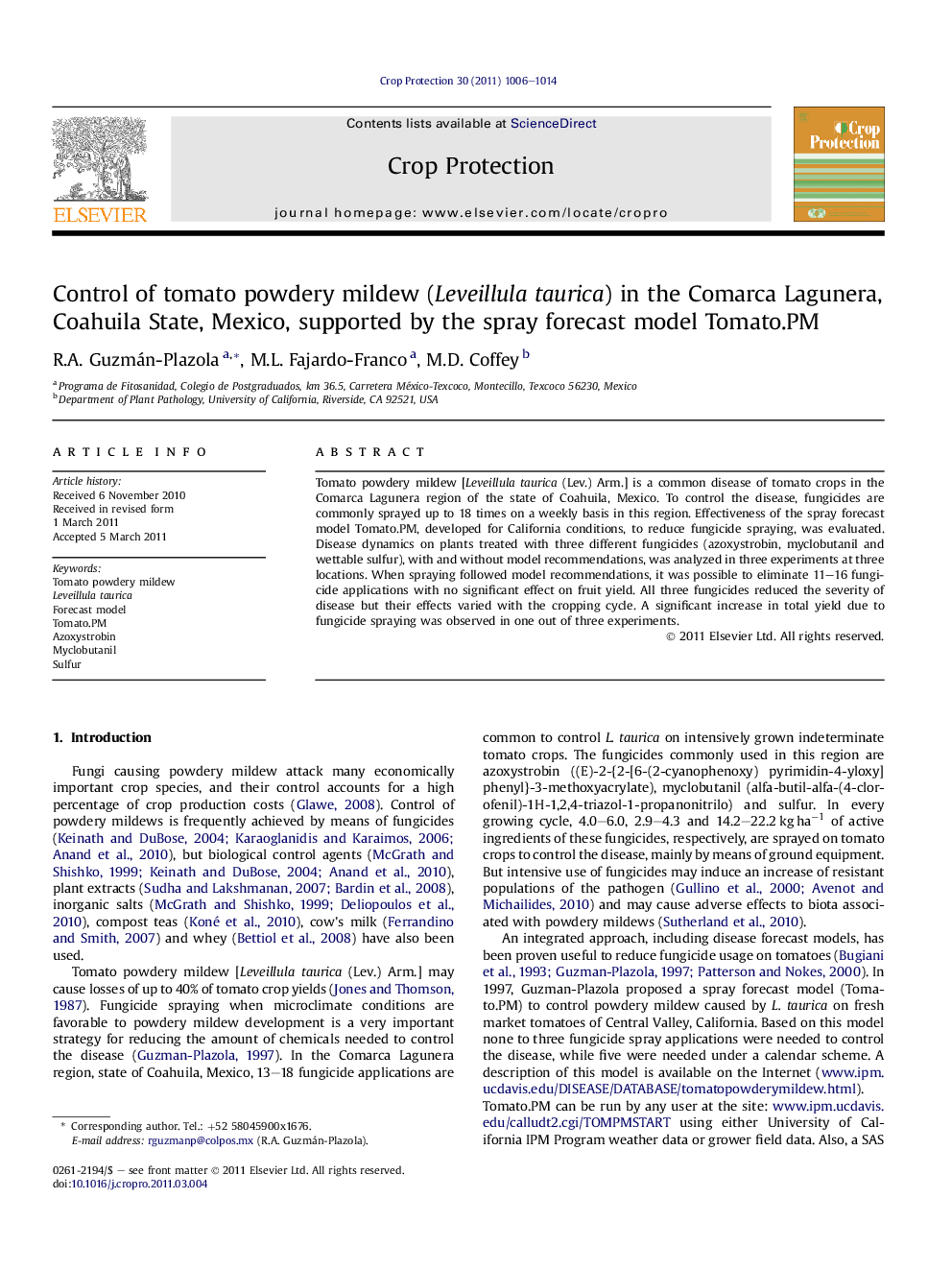| Article ID | Journal | Published Year | Pages | File Type |
|---|---|---|---|---|
| 4506762 | Crop Protection | 2011 | 9 Pages |
Tomato powdery mildew [Leveillula taurica (Lev.) Arm.] is a common disease of tomato crops in the Comarca Lagunera region of the state of Coahuila, Mexico. To control the disease, fungicides are commonly sprayed up to 18 times on a weekly basis in this region. Effectiveness of the spray forecast model Tomato.PM, developed for California conditions, to reduce fungicide spraying, was evaluated. Disease dynamics on plants treated with three different fungicides (azoxystrobin, myclobutanil and wettable sulfur), with and without model recommendations, was analyzed in three experiments at three locations. When spraying followed model recommendations, it was possible to eliminate 11–16 fungicide applications with no significant effect on fruit yield. All three fungicides reduced the severity of disease but their effects varied with the cropping cycle. A significant increase in total yield due to fungicide spraying was observed in one out of three experiments.
► Eleven to sixteen fungicide sprays were eliminated with the use of the model Tomato.PM. ► Azoxystrobin, myclobutanil and sulfur were effective against tomato powdery mildew. ► Fungicide effectiveness varied with the cropping season. ► Powdery mildew developed at the middle of the canopy and was weather dependent.
